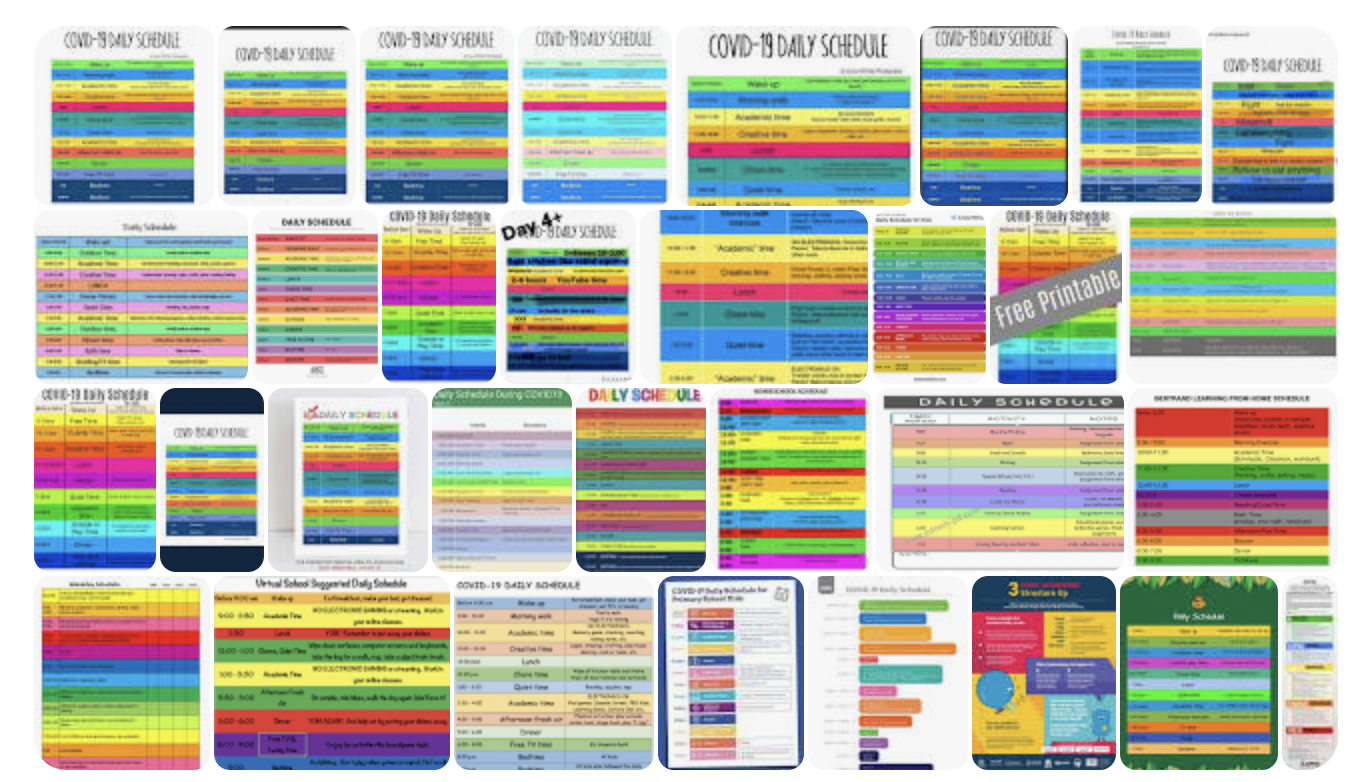Finding the whitespace
You need flying time and time on the ground. (SDASM Archives)
Back in the beginning of the pandemic, there were these schedules going around that some overzealous (or maybe just desperate) parents made to impose some kind of structure to the day and prevent it from devolving into twelve hours of screen time.
Most of these schedules had colored bands to make them look friendly or to categorize activities. To me, they just looked overwhelming.
The horror!
Even the meals and breaks and quiet time had colored bands. There was no “free time” — each minute had a specific purpose, and rest and play seemed like more responsibilities to check off.
Granted, the spring of 2020 was a pretty miserable time anyway. But trying to wring purpose out of every minute, to me, would have been an effective way to compound that misery. It would have made me feel more trapped than the lockdown itself ever did. I crave choices and freedom. I crave whitespace on my calendar.
Most modern calendar apps have colored bands to indicate appointments and other time that is spoken for, to be used for a specific purpose. And sometimes, there is a good reason to make appointments with myself to ensure that something gets done. But most of the time, I want to have as much whitespace as possible — time that is unassigned, that I can use in whatever way seems most appropriate in the moment. If I don’t have it — if I look at the calendar entries for tomorrow and it’s looking very colorful — I feel a sense of dread no matter how much I might enjoy the individual commitments.
As a kid, my life was nothing like the colored bands on the Covid daily schedules. It wasn’t even like the normal pre-pandemic days, filled with extracurricular activities, travel, and social events, of the privileged kids who I taught music lessons to. Me, I wandered in the woods with my friends Sally, Mike, and Kory. We built makeshift bridges over rushing creeks and got wet anyway. We climbed up walls of granite. We collected interesting objects we found.
I went to the beach. I played in the snow. I read for hours and hours and hours. I was bored and did nothing. I had a childhood.
These early experiences may have primed me for a life in which freedom is cherished. I have had periods in my life where I was far too busy, but most of the time, I’ve still made sure to have choices within that busy-ness. I get to decide when I will work and how much. The free time, though it gets filled, is still free.
Starting with the literal whitespace of the calendar, then, I try to live a life that is built on having room to play. And I look for metaphorical whitespace beyond the calendar — the latitude that I might have to question assumptions about how things have to be, or the hidden choices that allow me to opt out of perceived obligations. Maybe not everyone needs this margin, but I do, and I get uneasy when I sense that I am losing it.
I try to offer whitespace to others as well. My original model for The Little Middle School was that we we would do focused work all morning and then spend our afternoons at play, doing whatever projects interested us. That didn’t work because students needed much more remediation in math, reading, and writing than I had anticipated, and they didn’t know how to use long periods of free time well.
However, we wanted to give students free time and teach them how to use it. Along with breaks explicitly for recreation, we created blocks of “discretionary time” throughout the day — periods in which students could choose what they wanted to work on and how they wanted to pace themselves. With practice, they learned how to exercise autonomy and take ownership of their learning. They began to look forward to discretionary time and take pride in what they were able to accomplish when left to their own devices.
Structure can be used to coerce and control — but it can also provide a framework that gives us space to make our own choices within that structure. I don’t do well when my whole life is whitespace, but I cherish the whitespace that exists within the context of the decisions I’ve already made and the commitments I’ve agreed to. If I don’t have enough of this whitespace, I’ll seek more — and if I am not giving enough to my students and colleagues, I need to change that.
And if we find whitespace, let’s leave it that way. We don’t have to color it in. Let a break be a break. Let free time remain free time. Let’s trust each other, and ourselves, to use the moment the way we want to. The more we practice it, the better we will get.






